COLLABORATOR SPOTLIGHT:
SLOWSTITCH STUDIO
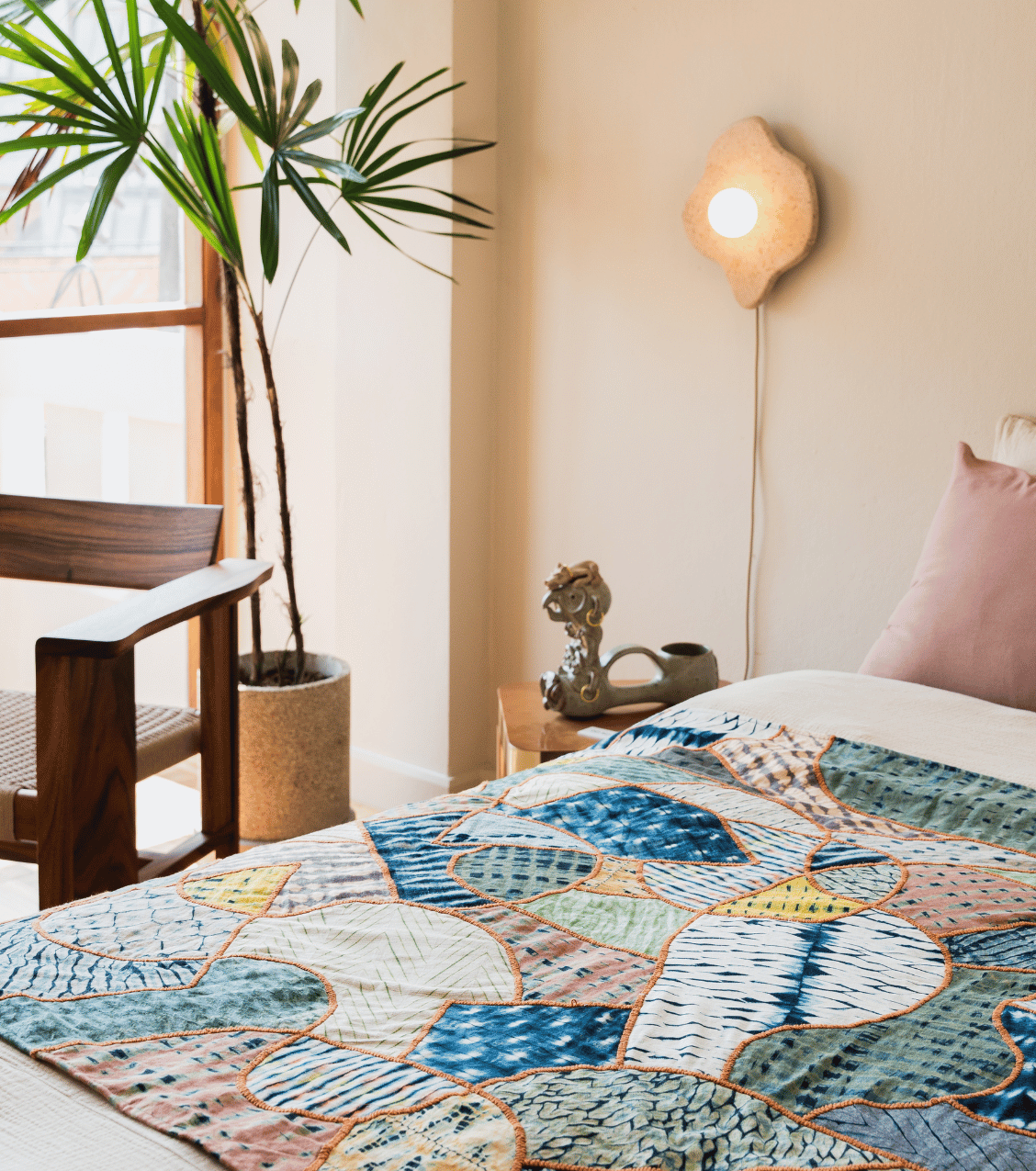
Slowstitch, a Chiang Mai-based textile design studio, bridges heritage and innovation by transforming traditional techniques into contemporary masterpieces.
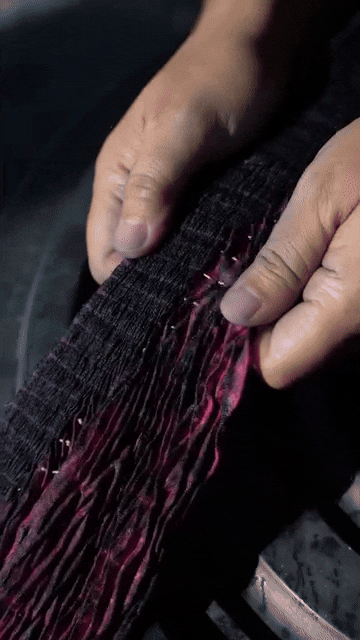
The studio’s work is rooted in the ancient Japanese art of Shibori, specifically stitch-resist dyeing—a time-honored method that turns fabric into a canvas of organic, flowing patterns. With every stitch placed by hand, the fabric is bound, dyed, and then released, revealing breathtaking color gradations and blurred-edge motifs that seem to hold movement within them.
For our showroom opening exhibition, PERN BAAN collaborated with Slowstitch to adapt their vibrant, hand-dyed textiles into several pieces of home decor.
Join our conversation with Slowstitch to discover the inspiration and process behind the creation of their pieces for the “Friends of the Home” Exhibition.
Left: Unraveling of a stitch-dyed shibori piece.
Tell us a bit about how you met and ended up channeling your shared love of shibori into the business that exists in Chiang Mai today?
We met about 10 years ago in a small mountain village in Japan. Serge was already living there at the time, serving a sort of informal apprenticeship to a textile master craftsman.
Ann arrived from Bangkok as a student to take part in a workshop, wanting to learn about indigo dyeing and shibori.
We discovered a shared appreciation for many of the things we saw in that place, like the simplicity and meditative nature of traditional textile work set against the rhythms of rural mountain life. With just thread, needle, fabric and a dye vat we could create something intricate and unpredictable. We fell in love with the technique and began the long journey of designing textile pieces together, which eventually culminated in the establishment of Slowstitch Studio.
Chiang Mai, with its deep roots of artistic and craft traditions, felt like the perfect place for Slowstitch. Ann's family already had a second home here so it was quite a natural choice to base ourselves in Chiang Mai to pursue our vision.
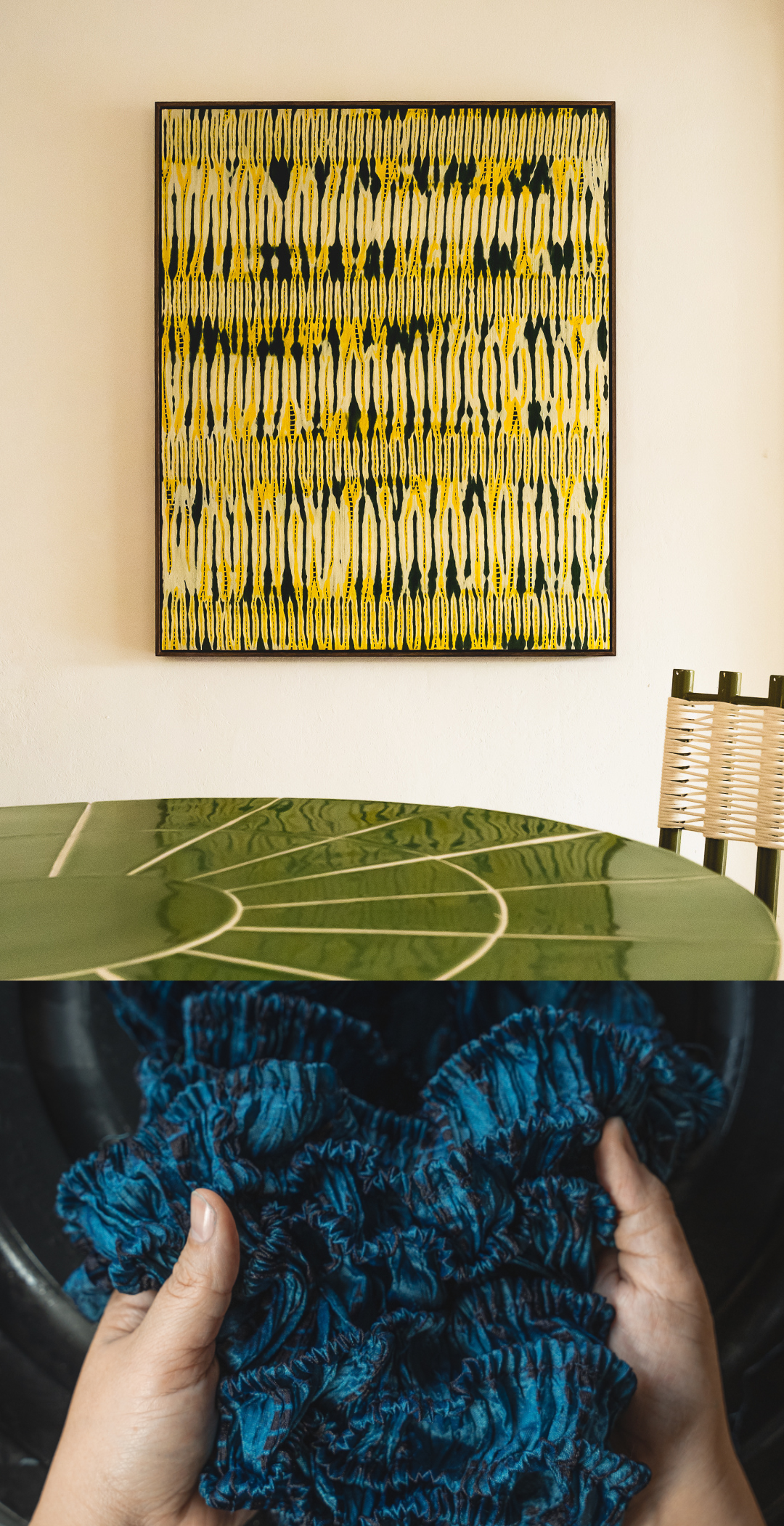

We met about 10 years ago in a small mountain village in Japan. Serge was already living there at the time, serving a sort of informal apprenticeship to a textile master craftsman.
Ann arrived from Bangkok as a student to take part in a workshop, wanting to learn about indigo dyeing and shibori.
We discovered a shared appreciation for many of the things we saw in that place, like the simplicity and meditative nature of traditional textile work set against the rhythms of rural mountain life. With just thread, needle, fabric and a dye vat we could create something intricate and unpredictable. We fell in love with the technique and began the long journey of designing textile pieces together, which eventually culminated in the establishment of Slowstitch Studio.
Chiang Mai, with its deep roots of artistic and craft traditions, felt like the perfect place for Slowstitch. Ann's family already had a second home here so it was quite a natural choice to base ourselves in Chiang Mai to pursue our vision.
THIS PATCHWORK THROW?
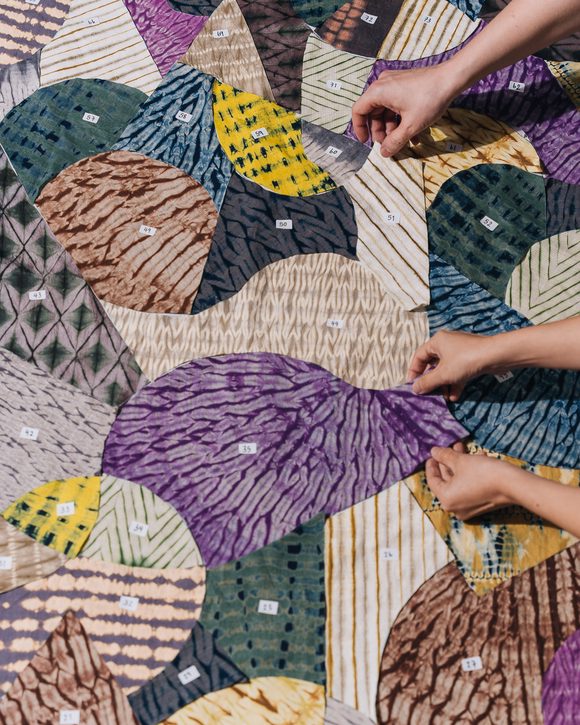
It's also not a process that benefits from economies of scale. Making ten pieces isn't any easier than making just one, you still have to work on each one individually from start to finish.
But the end result is worth it because you get double-sided designs with hazy bleeds, subtle gradations and endless tiny variations that are impossible to achieve otherwise.
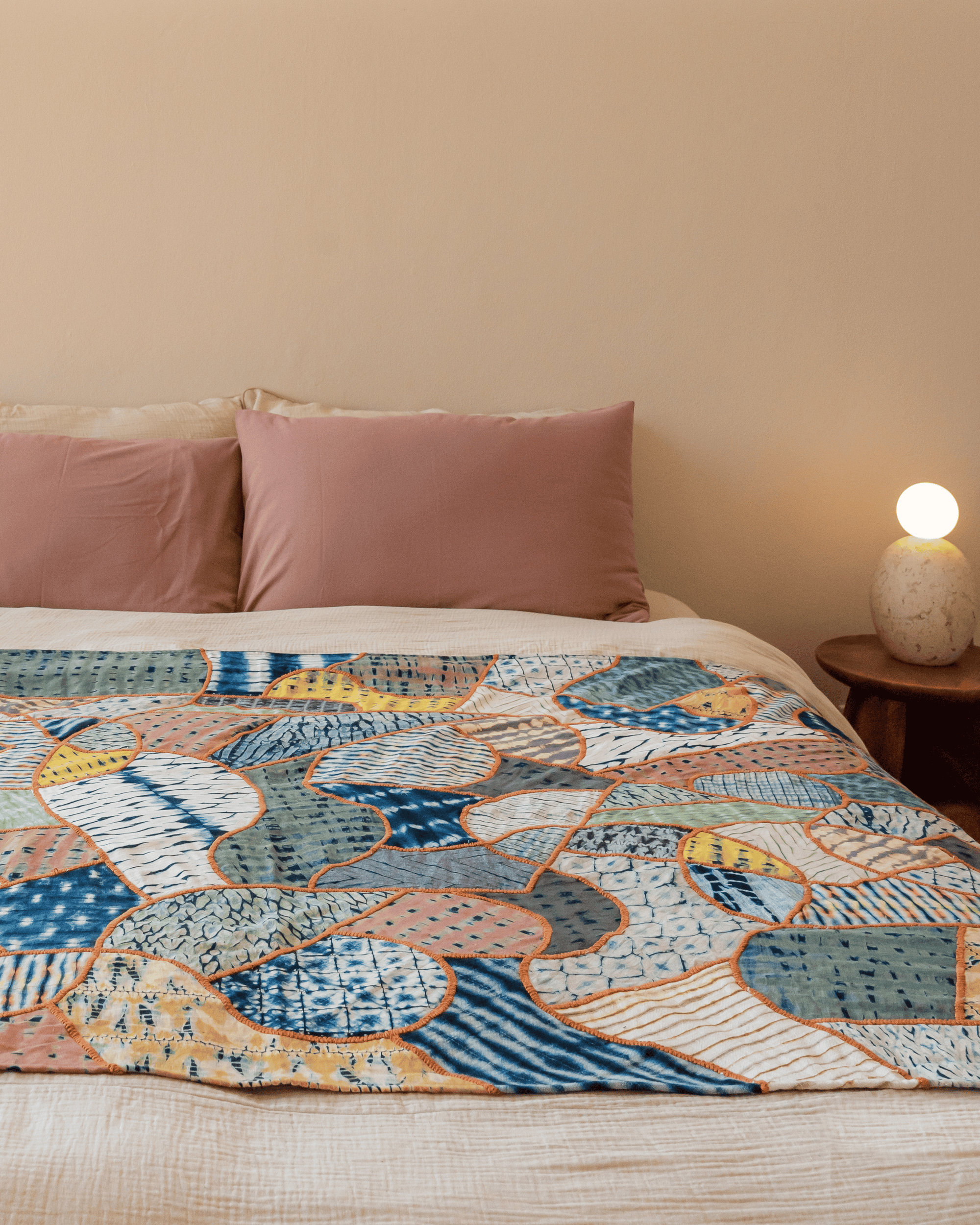
A major theme behind our patchwork compositions is the giving of new life to leftover fabric remnants. In general when we talk about Slowstitch, we try to focus more on the artistry and beauty of the finished pieces, and less on the maker's struggle.
But the reality is that our shibori designs take a substantial amount of time to create. Each piece involves stitching, tying, compression and a lengthy dyeing process. And all of that has to be done by hand, there are no machines that exist to make that process easier.

This is why each fragment holds a special significance, embodying hours and days of dedicated attention. This inherent value inspires a fundamental principle: mindful engagement with the material, honoring its potential for a continued life.
Rooted in our studies of traditional textiles in Japan, this deep respect for the material is most clearly expressed in our patchwork compositions like the one made for PERN BAAN. It's this very attentiveness, this celebration of each piece, that contributes so profoundly to their unique beauty.

A major theme behind our patchwork compositions is the giving of new life to leftover fabric remnants. In general when we talk about Slowstitch, we try to focus more on the artistry and beauty of the finished pieces, and less on the maker's struggle.
But the reality is that our shibori designs take a substantial amount of time to create. Each piece involves stitching, tying, compression and a lengthy dyeing process. And all of that has to be done by hand, there are no machines that exist to make that process easier.
It's also not a process that benefits from economies of scale. Making ten pieces isn't any easier than making just one, you still have to work on each one individually from start to finish.
But the end result is worth it because you get double-sided designs with hazy bleeds, subtle gradations and endless tiny variations that are impossible to achieve otherwise.


This is why each fragment holds a special significance, embodying hours and days of dedicated attention. This inherent value inspires a fundamental principle: mindful engagement with the material, honoring its potential for a continued life.
Rooted in our studies of traditional textiles in Japan, this deep respect for the material is most clearly expressed in our patchwork compositions like the one made for PERN BAAN. It's this very attentiveness, this celebration of each piece, that contributes so profoundly to their unique beauty.
Could you tell us about the process you went through to select colors, texture and material for these pieces?
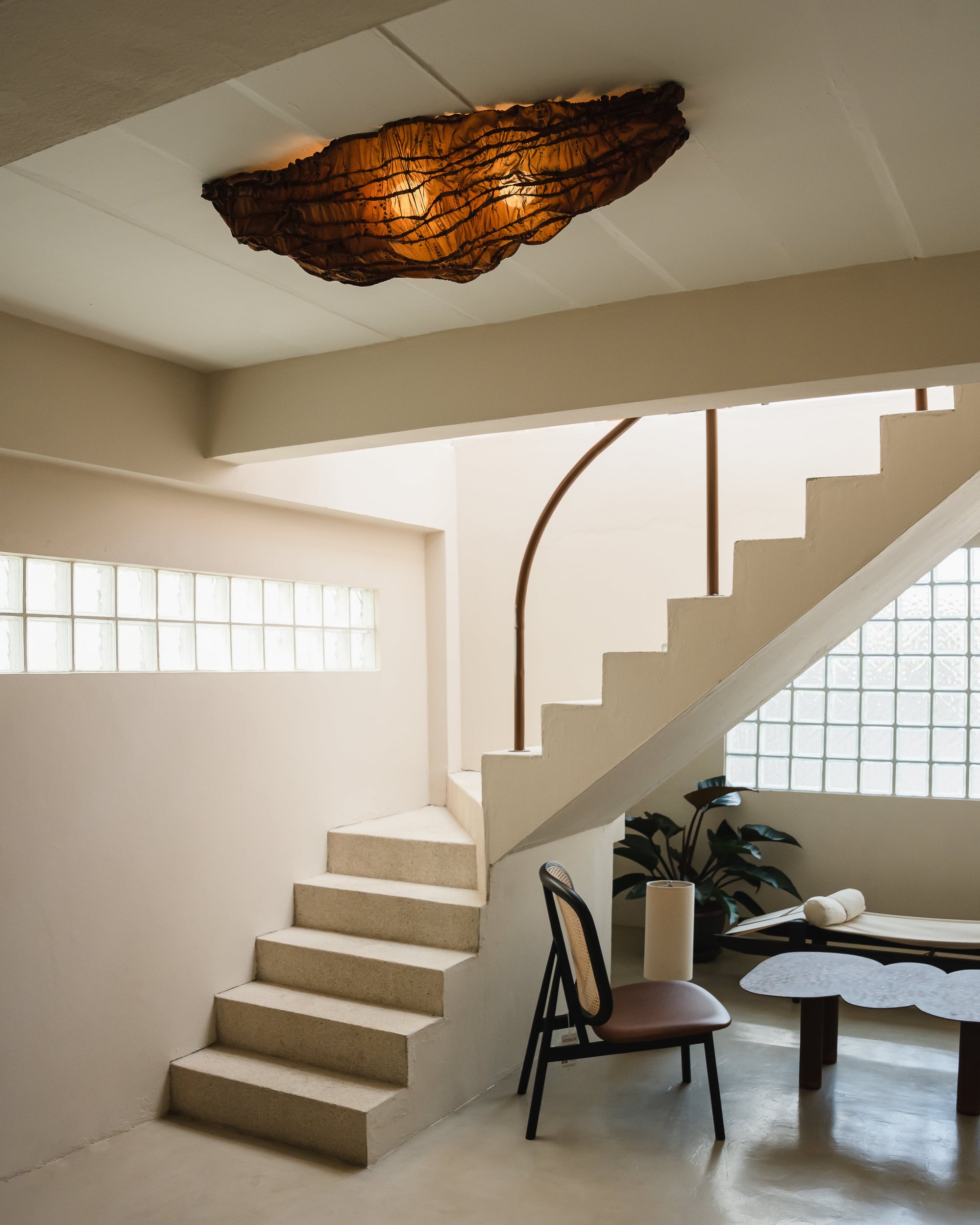
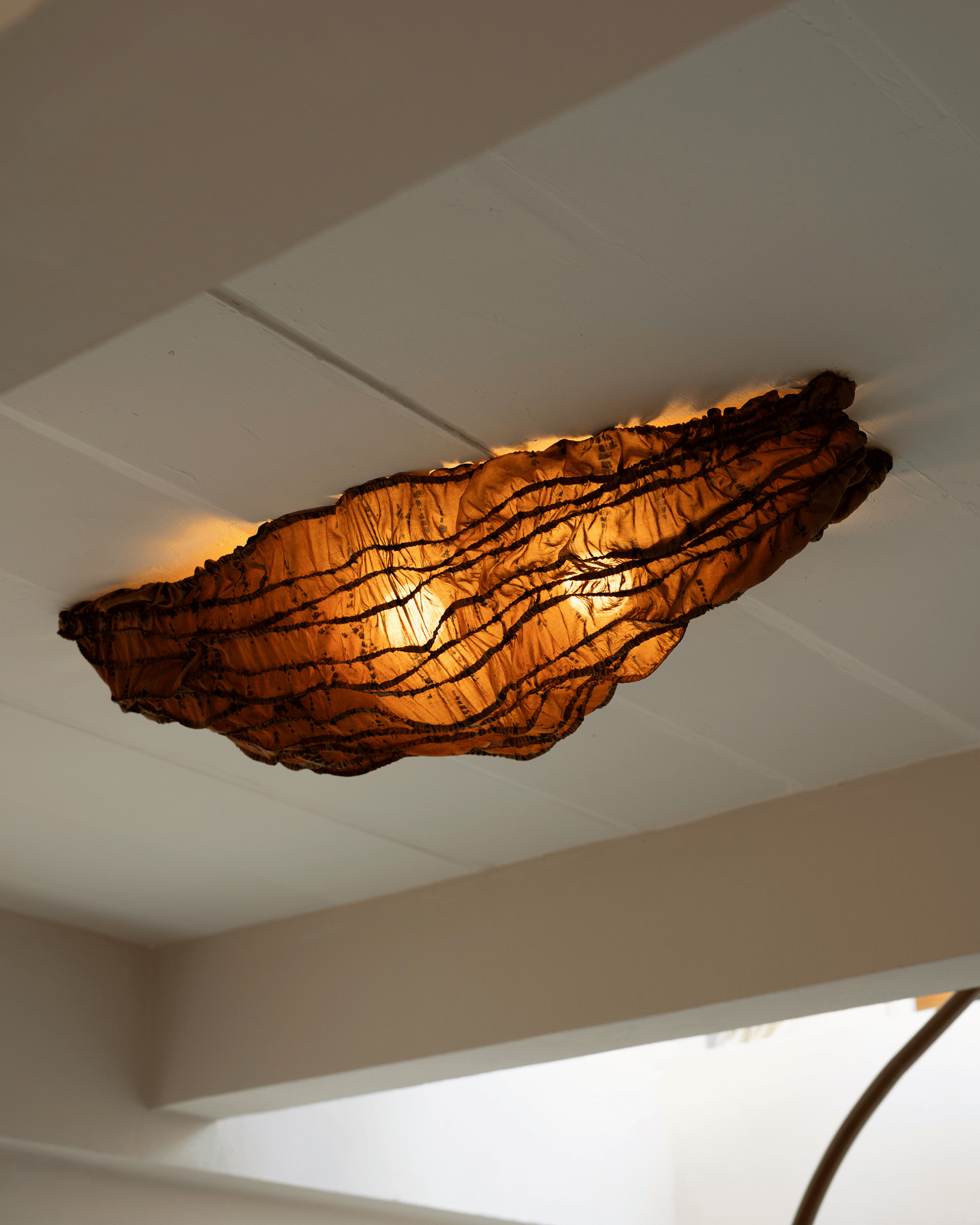
For the lighting designs, we aimed to translate the essence of shibori by drawing inspiration from our stitching techniques. Instead of ironing the dyed fabric flat, as is typical for textile products, we aimed to capture its temporarythree-dimensional quality- a quality which is usually just a midway step in the dyeing process. Thai silk, with its lustrous sheen and structural pliability, was the material of choice.
As for the colors, there was already a beautiful collection of objects and installations at PERN BAAN such as the lamps and sconces with their blends of blue and warm copper-brown tones. We took that combination as the starting point as it resonates with our own aesthetic of exploring the interplay of blue and earth tones in Slowstitch textiles.

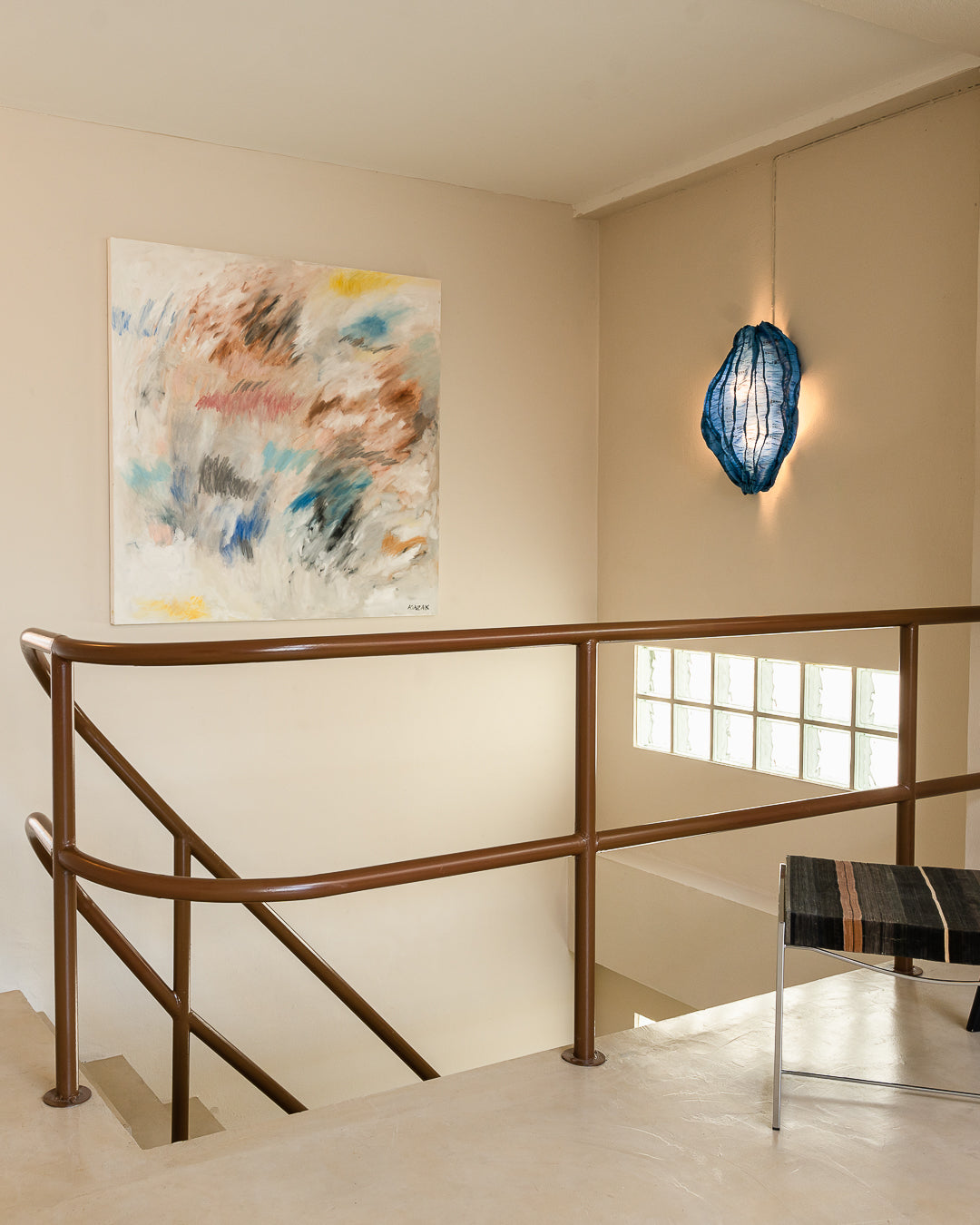
Would you say this is the primary difference between a Slowstitch textile functioning as a piece of clothing versus as a piece of home decor?
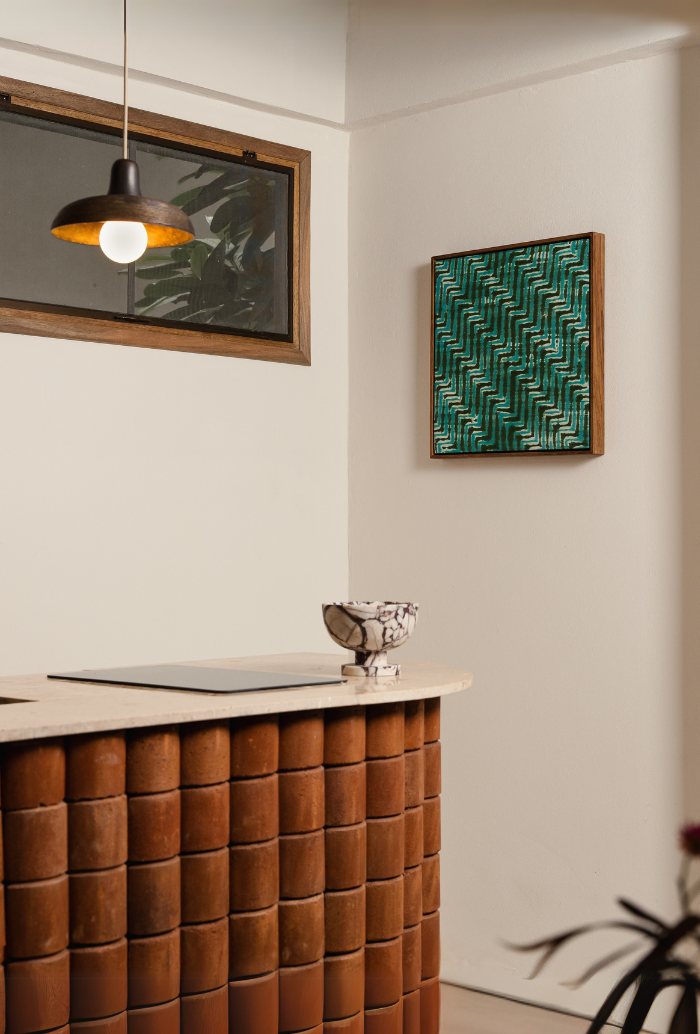

The primary difference is in how the fabric is experienced. With clothing, the body's form and motion determine how the textile and its patterns are perceived. In home decor, it becomes part of a space - it needs to work with light, structure, and surrounding textures. Home textiles also allow for more experimental techniques since they don’t have to withstand the same level of wear and movement as garments.


The primary difference is in how the fabric is experienced. With clothing, the body's form and motion determine how the textile and its patterns are perceived. In home decor, it becomes part of a space - it needs to work with light, structure, and surrounding textures. Home textiles also allow for more experimental techniques since they don’t have to withstand the same level of wear and movement as garments.
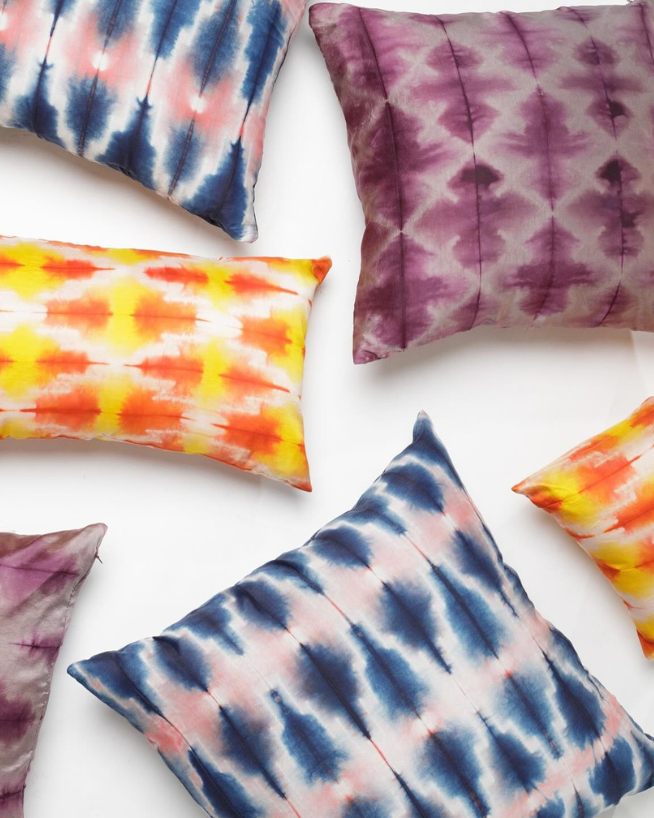
Pillows were amongst our earliest products and we are revisiting this category with new designs. A small folding chair prototype, designed for outdoor use, is also underway. Lastly, the architectural lighting pieces we created with PERN BAAN have opened up exciting new avenues for our textiles, and we are eager to explore their potential as permanent offerings.